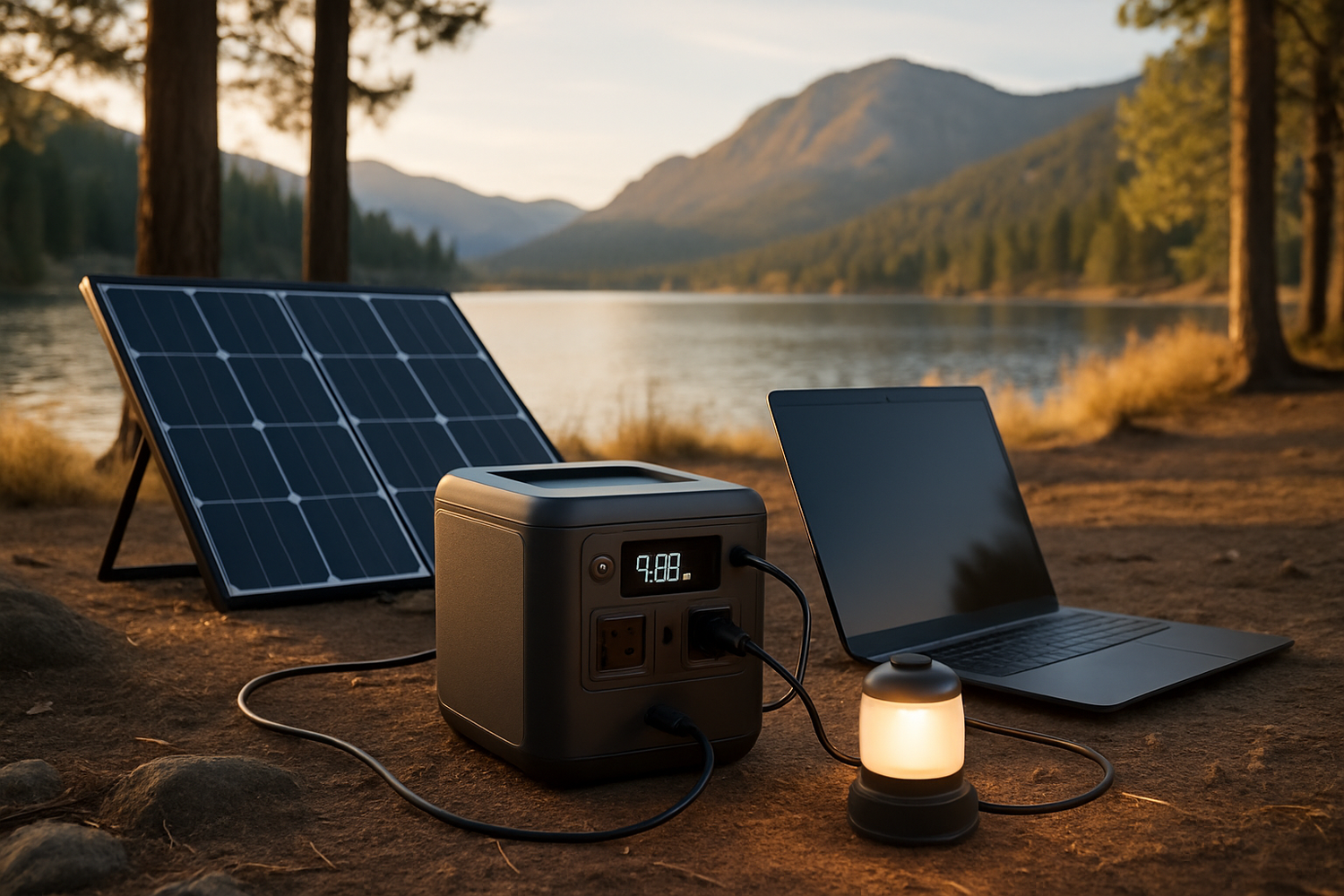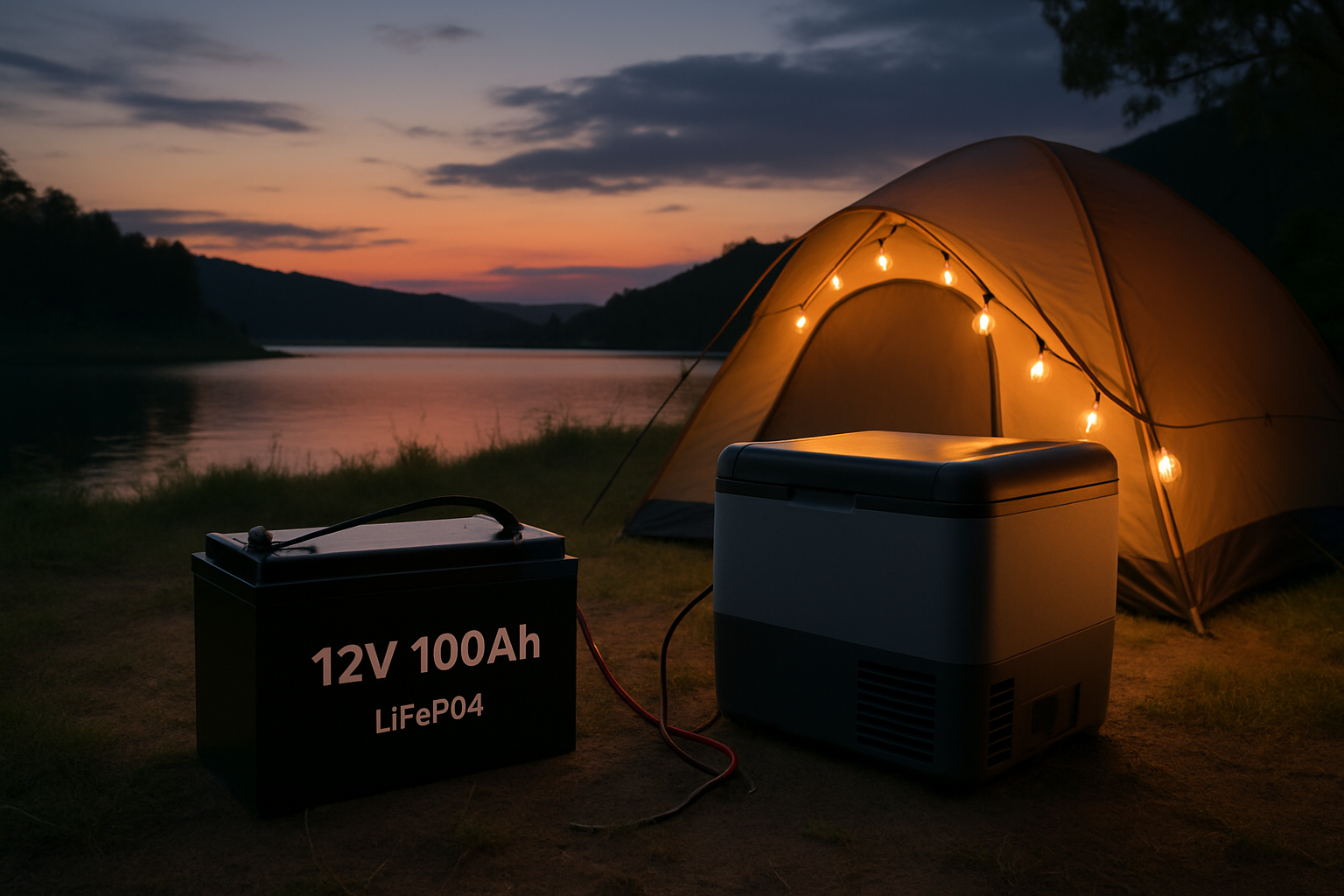As interest in off-grid adventures and energy independence grows, so does the reliance on portable power. Lithium-ion solar batteries are at the forefront of this shift, offering a compact and efficient way to power everything from campsites to remote cabins. Yet, misinformation can create confusion and prevent people from making informed decisions. This overview separates fact from fiction, addressing the most common myths about this technology.
Myth 1: Lithium-Ion Batteries Are Too Dangerous for Camping
A primary concern for many users is safety. Stories about batteries in consumer electronics have created a perception that all lithium-ion technologies are volatile. This is a significant misunderstanding.
The Reality of LiFePO4 Chemistry
The term 'lithium-ion' covers several chemistries. For solar storage and portable power stations, the most common type is the Lithium Iron Phosphate (LiFePO4) battery. LiFePO4 batteries have a highly stable chemical structure. They are far less prone to thermal runaway, which is the chemical reaction that can lead to fires in other lithium-ion types. Their stability makes them a reliable choice for rugged, mobile applications.
Advanced Safety with Battery Management Systems (BMS)
Modern lithium-ion solar batteries include a crucial component: a Battery Management System (BMS). This integrated electronic system acts as the battery's brain. It constantly monitors voltage, current, and temperature. The BMS provides protection against overcharging, over-discharging, short circuits, and extreme temperatures, ensuring the battery operates safely within its intended limits.
Myth 2: Solar Batteries Are Too Heavy and Bulky for Portable Use
The image of a battery often brings to mind heavy, cumbersome lead-acid units. While this was true for older technologies, lithium-ion has completely changed the game for portable power.
Superior Energy Density
Lithium-ion batteries possess a much higher energy density compared to traditional lead-acid batteries. This means they can store more energy in a smaller and lighter package. The rapid improvement of this technology is well-documented. A report from the The State of Energy Innovation highlights that the installed costs of lithium-ion batteries are roughly 85% lower than they were just a decade ago, which has fueled their widespread adoption. This advancement is key to creating effective, compact battery storage for camping.
A Practical Comparison
To illustrate the difference, consider a standard 100Ah battery. A lead-acid version can weigh over 60 pounds (27 kg). In contrast, a 100Ah LiFePO4 battery often weighs less than 30 pounds (13 kg). This significant weight reduction makes transportation and setup for camping far more manageable.
| Feature | LiFePO4 Battery (100Ah) | AGM Lead-Acid Battery (100Ah) |
|---|---|---|
| Average Weight | 25-30 lbs (11-14 kg) | 60-70 lbs (27-32 kg) |
| Energy Density | High | Low |
| Portability | Excellent for camping | Challenging for mobile use |
Myth 3: Lithium-Ion Batteries Don't Last Long
Many people assume that all rechargeable batteries have a short lifespan, similar to those in older smartphones that quickly lose their ability to hold a charge. This is not the case with modern LiFePO4 solar batteries.
Understanding Cycle Life
A battery's lifespan is measured in charge cycles—the number of times it can be fully charged and discharged before its capacity degrades significantly. LiFePO4 batteries offer an exceptional cycle life, often between 2,000 and 5,000 cycles. A comparable lead-acid battery may only last for 300 to 500 cycles. This durability makes LiFePO4 a long-term, cost-effective solution.
The Importance of Depth of Discharge (DoD)
Depth of Discharge refers to the percentage of the battery's capacity that has been used. LiFePO4 batteries can be regularly discharged to 80-100% of their capacity without substantial damage. Lead-acid batteries, on the other hand, are typically only discharged to 50% to avoid shortening their lifespan. A deeper look at performance metrics, as detailed in this ultimate reference on solar storage performance, shows that a higher usable DoD means you get more power out of a battery of the same rated capacity.
Myth 4: Solar Batteries Are Complicated to Set Up
The thought of wiring panels, controllers, and inverters can be intimidating. While complex off-grid systems for homes require professional installation, portable solar power solutions for camping are designed for simplicity.
Plug-and-Play Solutions
Many modern compact solar batteries are part of an integrated system, often called a portable power station. These units combine the battery, a solar charge controller, and an inverter into a single, user-friendly device. They feature multiple output ports, such as AC outlets, 12V DC sockets, and USB ports, allowing you to power various devices simultaneously. Setup is often as simple as unfolding a portable solar panel and plugging it into the power station.
Real-Time Monitoring
These systems typically include an LCD screen that provides real-time data on battery level, power input from the solar panel, and power output to your devices. This removes the guesswork and allows you to manage your energy usage effectively while enjoying the outdoors.
Myth 5: All Lithium-Ion Batteries Are Created Equal
This is one of the most pervasive solar battery storage myths. As mentioned earlier, 'lithium-ion' is a broad category. The specific chemistry inside the battery makes a world of difference in performance and safety.
LiFePO4 vs. Other Chemistries
While chemistries like Nickel Manganese Cobalt (NMC) are common in electric vehicles due to their slightly higher energy density, LiFePO4 is the preferred choice for stationary and portable energy storage. The reason comes down to a balance of key characteristics. According to the IEA's report, The Role of Critical Minerals in Clean Energy Transitions, the industry's shift toward LFP (LiFePO4) chemistry in certain applications reflects its advantages in safety, longevity, and the use of more abundant materials.
Why Chemistry Matters for Camping
For an application like camping, where reliability and safety are paramount, the advantages of LiFePO4 are clear. Its thermal stability reduces risk, and its long cycle life ensures your investment lasts for many adventures to come.
| Characteristic | LiFePO4 | NMC |
|---|---|---|
| Safety (Thermal Runaway) | High (~270°C) | Lower (~210°C) |
| Lifespan (Cycle Life) | 2,000-5,000+ | 1,000-2,000 |
| Cost | Generally lower | Higher |
| Primary Use Case | Energy Storage, Portable Power | Electric Vehicles, Electronics |
An Informed Choice for Your Adventures
Understanding the facts behind lithium-ion solar batteries empowers you to choose the right power solution. Modern LiFePO4 technology has overcome the limitations of older batteries, delivering a safe, lightweight, long-lasting, and user-friendly option for camping and off-grid power. By moving past these common myths, you can confidently embrace the freedom of reliable, portable solar energy.
Frequently Asked Questions
What is a Battery Management System (BMS)?
A BMS is an electronic system that manages a rechargeable battery. It protects the battery from operating outside its safe parameters by monitoring voltage, current, and temperature. It is essential for the safety and longevity of a lithium-ion battery pack.
Can I use a lithium-ion battery in cold weather?
Yes, though performance can be affected. LiFePO4 batteries can typically discharge in temperatures down to -4°F (-20°C). However, charging is often restricted at temperatures below freezing (32°F or 0°C) to prevent damage. Some premium batteries include built-in heating systems to allow for safe charging in colder conditions.
How do I choose the right size battery for camping?
To select the right size, you should first calculate your daily energy needs in watt-hours (Wh). List all the devices you plan to power, find their wattage, and estimate how many hours you will use each one per day. Multiply the wattage by the hours for each device and add them all together. Choose a battery with a capacity that comfortably exceeds your daily total to account for inefficient charging on cloudy days.





Leave a comment
All comments are moderated before being published.
This site is protected by hCaptcha and the hCaptcha Privacy Policy and Terms of Service apply.